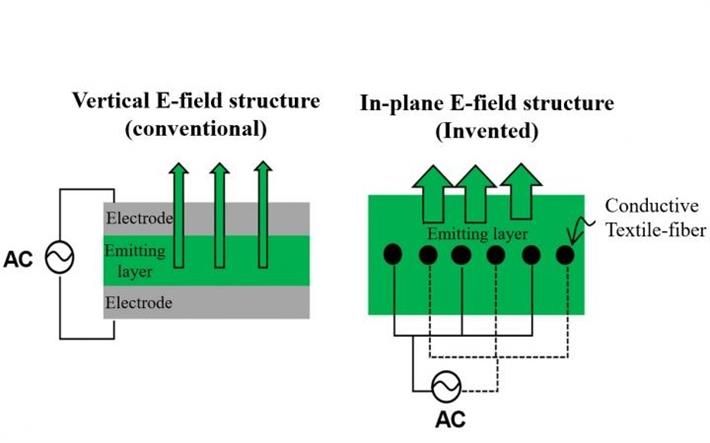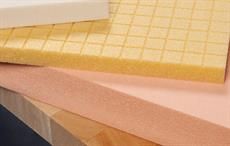Scientists at the Daegu Gyeongbuk Institute of Science and Technology (DGIST) have developed a new electro-luminescent(EL) technology comprising textile-fibre-embedded multiluminescent device, which may be used in wearable devices in the future. The new device improves efficiency by emitting light more flexibly and stably than the existing devices.
The research has been led by Dr. Soon Moon Jeong in the Division of Energy Technology at DGIST. This will enable the production of light-emitting elements that overcome the limitations of existing methods.Scientists at the Daegu Gyeongbuk Institute of Science and Technology (DGIST) have developed a new electro-luminescent(EL) technology comprising textile-fibre-embedded multiluminescent device, which may be used in wearable devices in the future. The new device improves efficiency by emitting light more flexibly and stably than the existing devices.#
Light emitting devices need electrodes to transmit energy to the light emitting layer. The 'flat electrode' consists of a coplanar structure surrounding the light emitting layer, which has limitation as the light emitted is blocked by the electrode. The decreasing flexibility of the electrodes has also been an obstacle to manufacturing a flexible light emitting device that emits light constantly.
To overcome these limitations, Jeong's team cross-inserted a new type of electrode made of fibres inside the light emitting layer unlike existing light emitting devices. This led to development of a new light-emitting technology using an in-plane electric field generated in parallel to the light-emitting layer. The light-emitting device produced this way improved efficiency significantly by emitting light more flexibly and stably than the existing light-emitting devices.
Jeong's research team applied a new luminescent film using zinc sulfide (ZnS) and polydimethylsiloxane (PDMS) to the luminescent layer while using the in-plane electric field. Through this, the team was able to produce both mechanoluminescence (ML) which generates light by applying mechanical force and electroluminescence (EL) which generates light by operating the electric field. Therefore, this new technology could maintain constant and efficient light intensity in various environments.
The structure of light emitting device developed by Jeong's team solved the problem of the existing light emitting device in which electrodes are inserted into the light emitting layer and block light. By doing so, the research team also solved the disadvantage that thick electrodes, needed to further increase the light intensity of light emitting device rather, posed by blocking the light of the light emitting layer.
Jeong said "We want to change the paradigm of related industries in the future through the development of devices that emit light constantly, despite any changes of forms. This is definitely possible if we improve the light emitting device further, and it is expected to be used in various forms of light emitting textile and wearable devices."
The research has been published in the Materials Today.
Fibre2Fashion News Desk (SV)


